
Roots
The soft hum of evening settles, a quiet invitation to stillness. For many, this time brings a familiar ritual ❉ the gentle preparation of textured hair for its nightly rest. While the practical aspect of preserving delicate curls and coils from friction and moisture loss is widely acknowledged, the true depth of this practice extends far beyond simple preservation.
It reaches into the very earth of ancestry, drawing sustenance from generations of wisdom and quiet acts of self-care. This act of covering hair at night is not merely a modern convenience; it is a continuation, a living echo of practices steeped in cultural significance and a profound connection to identity.
The fibers of textured hair hold stories, each coil a testament to resilience and heritage. To shield them, particularly as day turns to night, connects us to a long lineage of women who understood the intrinsic value of their strands. This understanding transcends the purely cosmetic, delving into realms of spiritual protection, social declaration, and a quiet, personal reverence for what grows from one’s head.

The Ancient Language of Hair
Across countless African societies, hair was never simply an aesthetic adornment. It served as a potent form of communication, a visual lexicon broadcasting social standing, age, marital status, and even tribal affiliation. The patterns of braids, the direction of cornrows, the adornments chosen – each held a specific message, a silent dialogue spoken through strands.
- Hair as Identity ❉ In pre-colonial Africa, hairstyles communicated an individual’s family background, tribe, marital status, age, wealth, and even religious beliefs.
- Hair as Status ❉ Rulers and warriors might wear elaborate hairstyles to signify their status and power.
- Hair as Spirituality ❉ Many African cultures considered the head the most spiritually potent part of the body, making hair a direct extension of this sacred space, believed to hold magical powers and connect one to ancestors and the divine.

Why Hair Matters Beyond the Surface?
The intimate connection between hair and personal identity is a recurring theme across cultures. For individuals of African descent, this bond is particularly potent, shaped by centuries of historical experiences. The manipulation of hair, whether through styling or covering, has always held layers of meaning.
Hair, especially for Black women, stands as a profound symbol of self-expression and cultural identity, carrying stories of resilience and heritage.
The journey of textured hair through history reflects a complex interplay of personal choice, societal pressures, and acts of resistance. Even when circumstances forced certain styles, such as headwraps during enslavement, these coverings were often reclaimed and imbued with new, defiant meanings. The act of tending to one’s hair, even in the quiet hours of night, thus becomes a continuation of this enduring legacy.
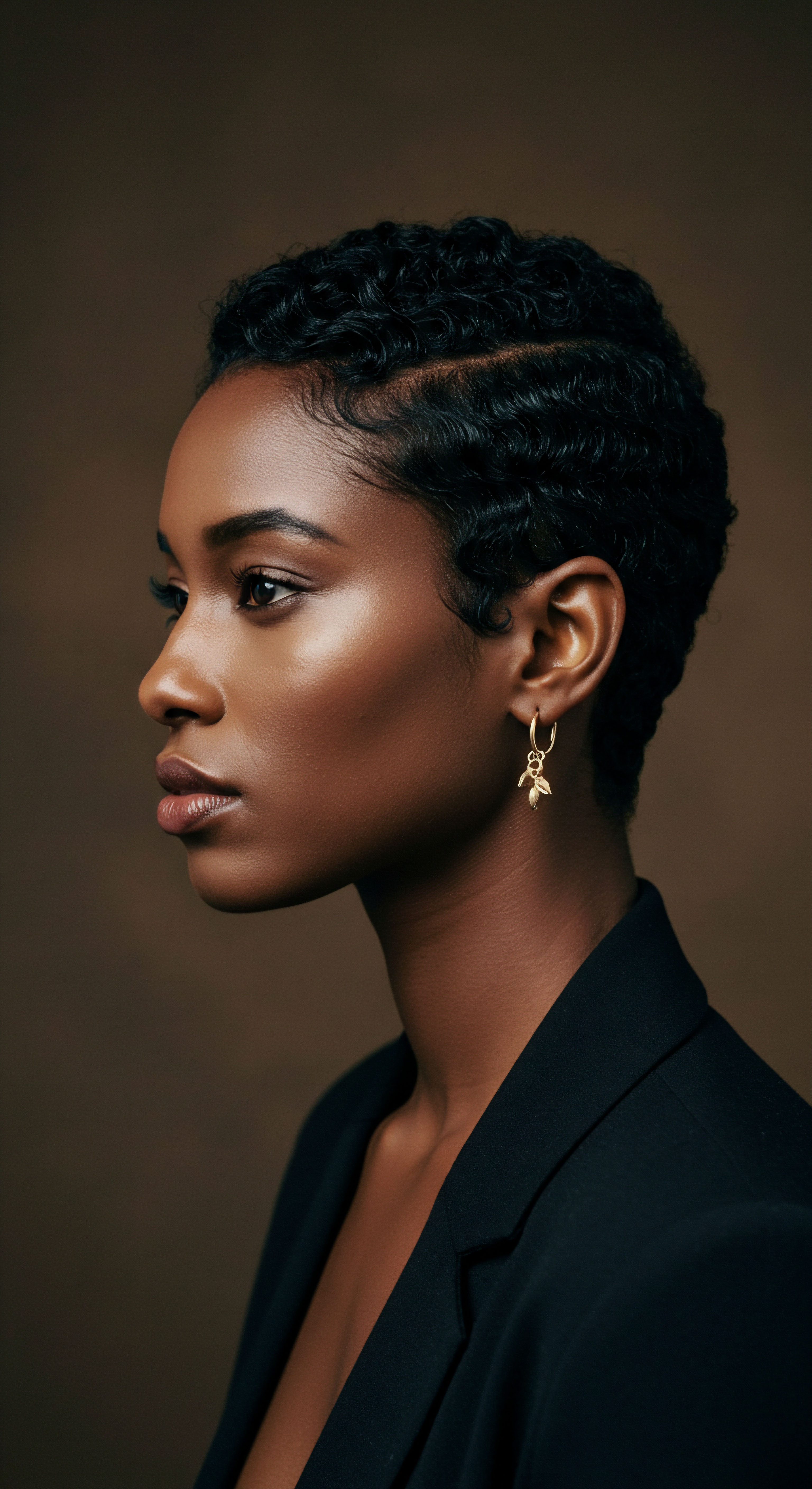
The Anatomy of Textured Hair
To truly appreciate the need for gentle care, particularly during sleep, a brief understanding of textured hair’s unique structure is helpful. Unlike straight hair, which typically has a round cross-section, textured hair often possesses an elliptical or flat cross-section, contributing to its distinct curl patterns, from loose waves to tight coils. This shape, combined with fewer cuticle layers, can make textured hair more prone to dryness and breakage.
The natural curl patterns also mean that hair strands often rub against each other, leading to friction and tangling, especially during movement in sleep. This physical interaction can disrupt the cuticle layer, which is the outermost protective shield of the hair shaft. When the cuticle is lifted or damaged, moisture can escape more easily, leaving the hair vulnerable and less elastic.
Understanding these intrinsic qualities helps illuminate why a protective covering at night becomes not just a preference, but a practical necessity for maintaining the health and vitality of textured hair. It safeguards the delicate balance of protein and moisture that keeps strands supple and strong.

Ritual
As twilight deepens, a quiet understanding settles over many homes. The transition from day to night often brings with it a specific set of practices, a calming sequence that prepares not just the body for rest, but also the hair for its own nightly sanctuary. This shift from the bustling demands of the day to the gentle cadence of evening care holds practical wisdom, guiding us in methods that preserve and honor textured hair. It is a moment of intentional connection, a quiet dialogue with one’s strands, moving beyond simple protection to a deeper appreciation of ancestral habits.
The practices associated with nighttime hair care for textured hair are not merely steps in a routine; they are rituals, often passed down through generations, holding a quiet power and purpose. They represent a continuum of care that respects the unique qualities of curls, coils, and waves, preparing them for the dawn.

Nighttime Sanctuary Essential Sleep Protection
The sleep environment, often perceived as a realm of passive rest, holds active consequences for textured hair. Cotton pillowcases, for example, with their absorbent nature and rough fibers, can draw moisture from hair and create friction, leading to dryness, frizz, and breakage. This is where protective coverings, such as bonnets, scarves, or wraps, step in as guardians of hair health.
These coverings, typically made of smooth materials like silk or satin, create a gentle barrier between the hair and the pillow. This reduces friction, allowing the hair to glide rather than snag, thereby preserving the cuticle layer and minimizing mechanical damage. They also help to retain the hair’s natural moisture and any products applied, preventing them from being absorbed by bedding.
The practice of wearing a bonnet at night became closely associated with the concept of “bedtime beauty” for Black women, preserving intricate braids, twists, or styles, and reducing the need for frequent restyling, which minimizes damage. This simple act becomes a daily commitment to hair longevity and health.
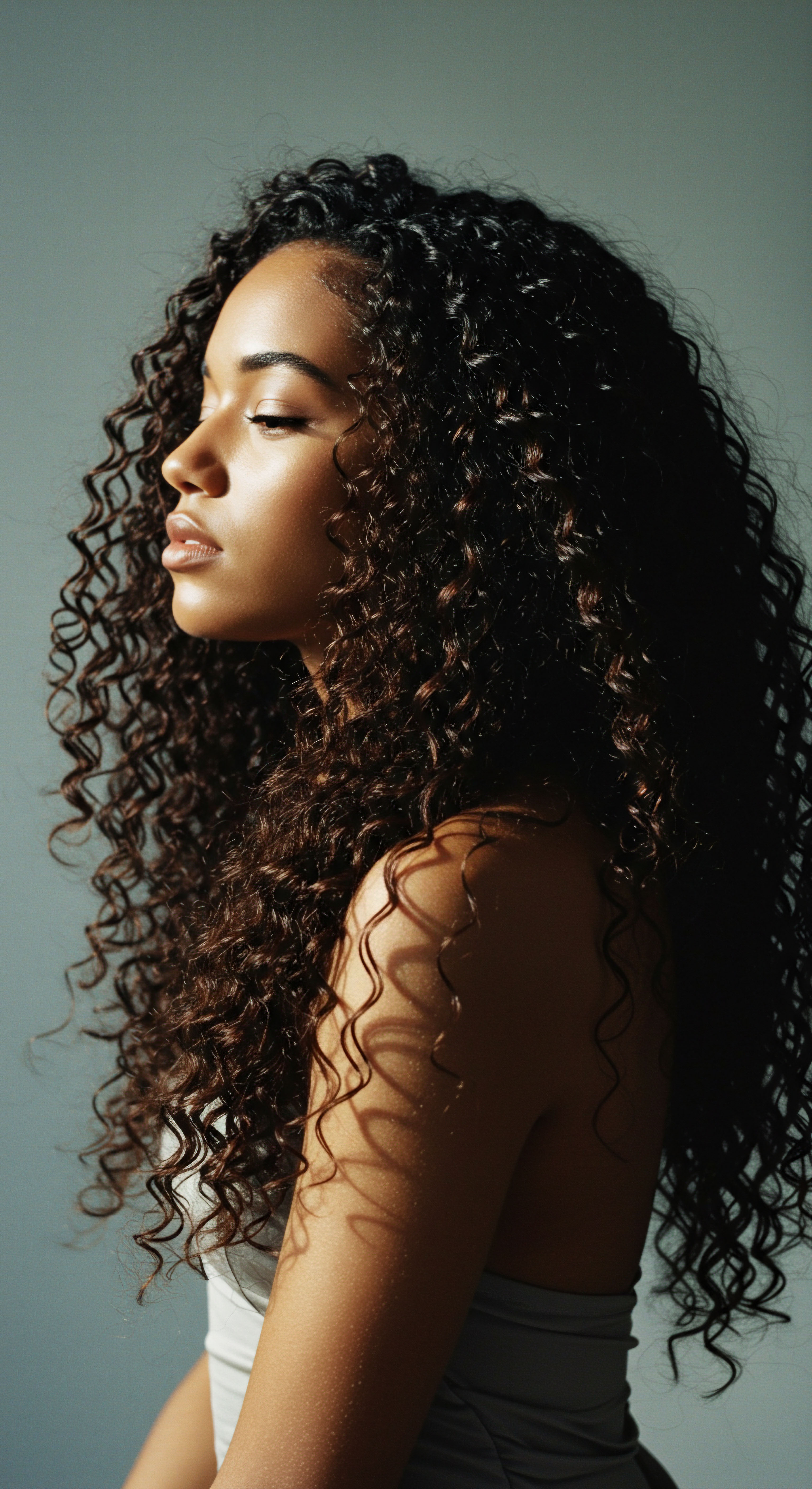
How Do Nighttime Coverings Aid Hair Health?
The benefits of nighttime hair coverings extend beyond superficial protection, touching upon the very science of hair health.
- Moisture Preservation ❉ Textured hair, due to its structure, tends to be drier than other hair types. Bonnets and scarves create a microclimate around the hair, limiting moisture evaporation throughout the night. This helps maintain the hair’s natural hydration and the efficacy of applied conditioners or oils.
- Friction Reduction ❉ The smooth surface of silk or satin minimizes the rubbing and tugging that can occur against cotton pillowcases. This friction can lead to raised cuticles, frizz, split ends, and breakage. By reducing this, hair remains smoother and stronger.
- Style Preservation ❉ For those who spend time styling their hair, a bonnet can significantly prolong the life of a style, whether it’s a twist-out, braid-out, or simply defined curls. This means less manipulation and less heat application in the morning, contributing to overall hair wellness.
The choice of material is important here. While cotton might be comfortable for sleep, its absorbent nature works against the hair’s need for moisture. Silk and satin, on the other hand, are non-absorbent and have a low friction coefficient, making them ideal choices for hair protection.
| Covering Type Bonnets |
| Primary Material Silk or Satin |
| Key Benefit Full hair enclosure, moisture retention, friction reduction. |
| Covering Type Scarves |
| Primary Material Silk or Satin |
| Key Benefit Versatile wrapping styles, scalp breathability, adaptable to various hair lengths. |
| Covering Type Pillowcases |
| Primary Material Silk or Satin |
| Key Benefit Passive protection, less restrictive than head coverings. |
| Covering Type These coverings help maintain hair health by reducing friction and preserving moisture. |

The Art of Hair Styling for Nighttime
Beyond the covering itself, specific styling techniques are often employed before sleep to further protect textured hair. These methods aim to minimize tangling, maintain curl definition, and prepare the hair for easy styling in the morning.
Popular methods include loosely twisting or braiding the hair into sections, creating “pineapple” updos where hair is gathered at the crown, or simply tying a loose bun. These techniques reduce the surface area of the hair exposed to friction and prevent curls from being stretched or crushed during sleep. The deliberate act of sectioning and securing the hair before covering it adds another layer of mindful care, transforming a simple bedtime routine into a thoughtful preparation for the day ahead.
Protecting hair at night goes beyond preventing damage; it is a conscious act of preserving moisture and style, extending the life of hair and reducing daily manipulation.
The ritualistic nature of these practices extends into the selection of products. Many individuals apply leave-in conditioners, moisturizing creams, or light oils before covering their hair, allowing these products to deeply penetrate and nourish the strands overnight. This conscious layering of moisture and protection speaks to a deep understanding of textured hair’s needs and a proactive approach to its well-being.

Relay
To consider the nighttime covering of textured hair as merely a practical measure is to glimpse only the surface of a deep, flowing river. Beneath the visible currents of preservation and convenience lie profound cultural depths, intricate social commentaries, and an enduring dialogue with history. This practice, often a quiet personal moment, resonates with the collective experiences of identity, resistance, and self-definition that span continents and centuries. It invites us to consider how something as seemingly simple as a cloth on one’s head can hold generations of meaning, becoming a symbol of continuity and a site of profound personal and communal significance.
The threads of history, social commentary, and personal expression are interwoven within this nightly ritual, offering a complex understanding of its true importance.

The Echo of Ancestral Practices
The tradition of covering hair in African cultures predates colonial influence, carrying spiritual, social, and aesthetic weight. Headwraps, or ‘gele’ in Nigeria, ‘dukus’ in Ghana, and ‘doeks’ in South Africa, were not simply fashion items; they communicated wealth, marital status, tribal affiliation, and even emotional states. This historical context provides a powerful backdrop for understanding modern nighttime coverings.
When Africans were forcibly brought to the Americas, they carried these traditions with them. Despite efforts to strip them of their cultural identity, hair practices persisted, often adapted as subtle acts of resistance. The infamous Tignon Laws of 18th-century Louisiana, which mandated that free Black women wear head coverings to signify their social status, paradoxically led to these women transforming the tignon into elaborate, defiant fashion statements, using luxurious fabrics to assert their dignity and agency. This historical irony highlights the enduring spirit of self-definition that has always accompanied hair covering.
Nighttime hair coverings carry a rich history of cultural resistance and self-expression, transcending their practical use to embody identity and defiance.
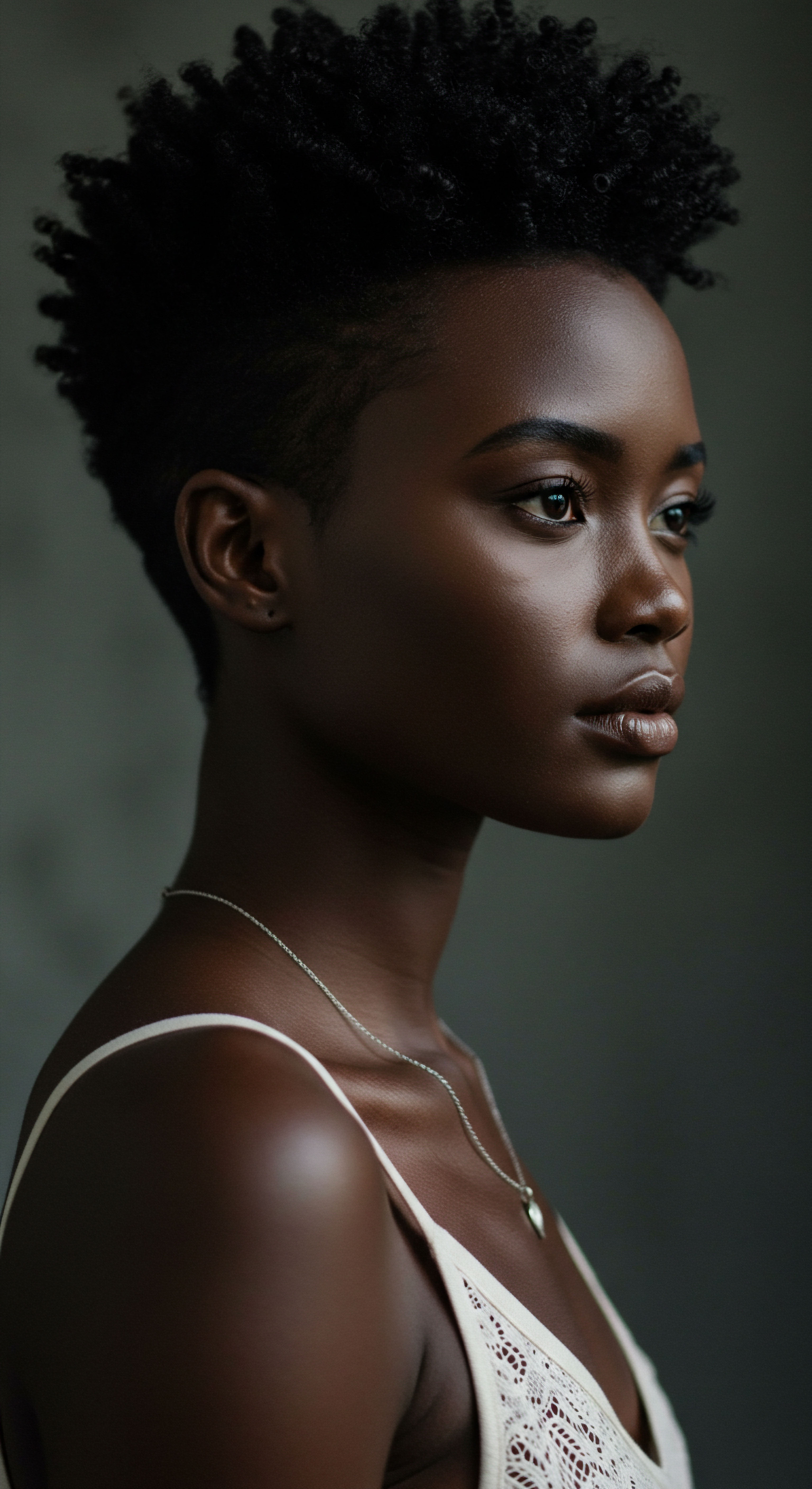
Hair as a Contested Space in Identity?
The relationship between textured hair and identity has been a sensitive topic, frequently intersecting with issues of social oppression and racial discrimination. Hair has often been policed, targeted to discount abilities, and limit access to resources, education, and employment opportunities for Black women. This societal pressure to conform to Eurocentric beauty standards has led to a complex history of hair manipulation, including chemical straightening.
The natural hair movement, gaining significant traction in recent decades, represents a powerful reclamation of identity and a rejection of assimilation. This movement has seen a rise in the embrace of natural hair textures and, alongside it, a renewed appreciation for protective styles and coverings, including those worn at night. The act of preserving one’s natural hair, rather than altering it to fit external standards, becomes a profound statement of self-acceptance and cultural pride.
A study published in the Social Psychological and Personality Science journal found that Black women with natural hairstyles were perceived as less professional, less competent, and less likely to be recommended for job interviews compared to Black women with straightened hair and white women with either curly or straight hair. This empirical evidence underscores the very real societal biases that textured hair has faced, making the act of cherishing and protecting one’s natural hair, even in private, a quiet but potent act of defiance against such norms.
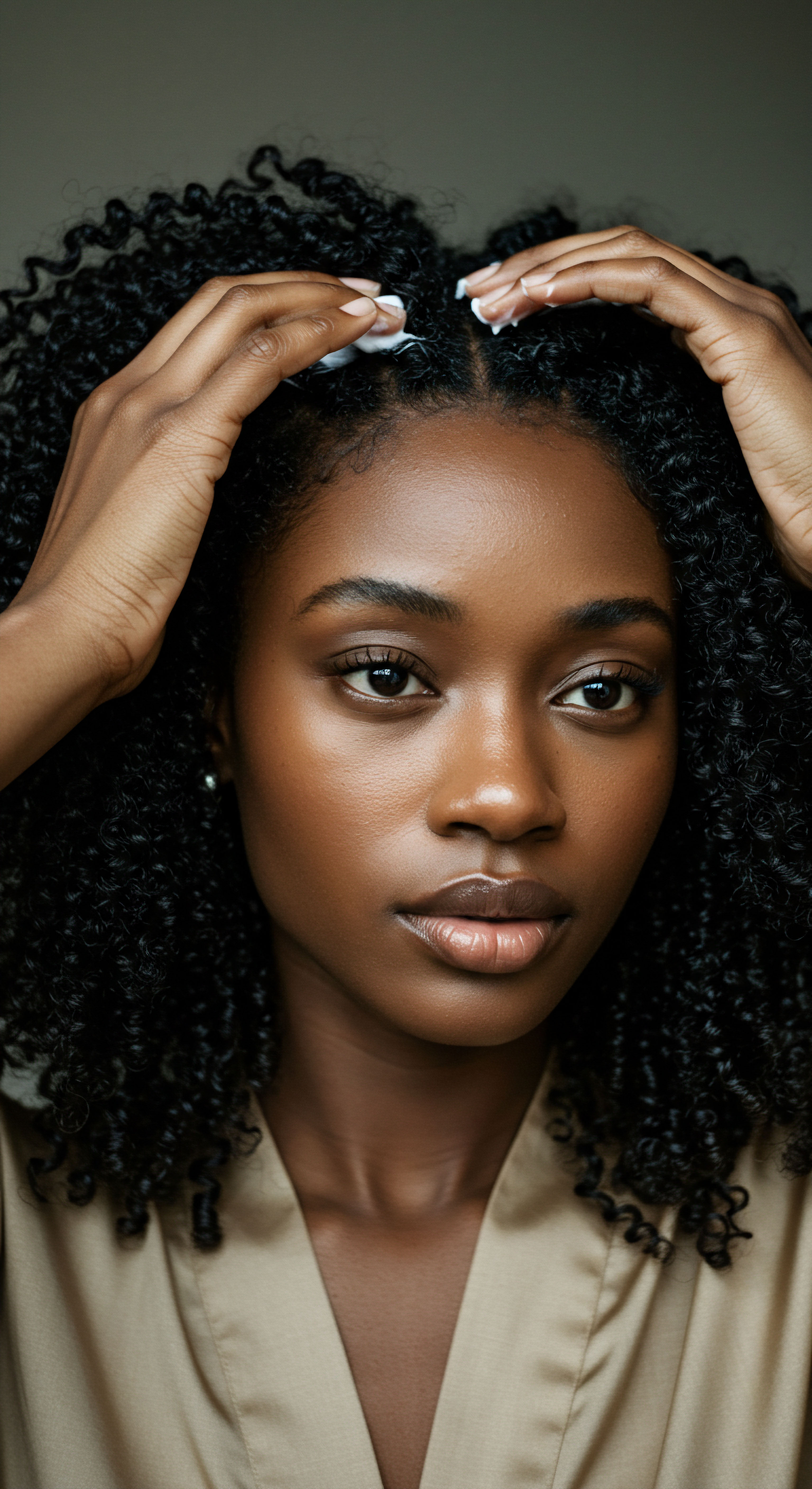
Economic Implications of Hair Care
The natural hair movement has also had a significant economic impact, shifting consumer spending patterns within the haircare industry. Historically, a substantial portion of the Black haircare market was dominated by products for chemical relaxers. However, between 2006 and 2011, relaxer kit sales dropped by 17%, indicating a clear shift towards natural hair care products. This trend continued, with relaxer market share plummeting from 60% in 2009 to only 5% in 2019.
This economic shift has not only spurred the growth of new product categories but has also created substantial opportunities for Black entrepreneurs. According to a 2019 report by American Express, the number of businesses owned by African American women grew by an astounding 164% from 2007 to 2019, with much of this growth concentrated in the beauty and personal care sectors, directly fueled by the natural hair movement. This economic agency, driven by choices to care for natural hair, demonstrates a powerful feedback loop where cultural identity informs consumer behavior, which in turn strengthens community and self-reliance.
| Product Category Chemical Relaxers |
| Market Share 2009 60% |
| Market Share 2019 5% |
| Product Category Natural Hair Styling Products |
| Market Share 2009 (Lower, specific data not provided but implied growth) |
| Market Share 2019 (Significant growth, becoming dominant) |
| Product Category The market saw a dramatic shift from chemical relaxers to natural hair products, reflecting cultural preferences. |

What Psychological Significance Does Nighttime Hair Care Hold?
Beyond the cultural and economic dimensions, the nightly ritual of hair covering also holds profound psychological significance. For many Black women, hair care routines serve as a form of self-care, a deliberate act of mindfulness and self-compassion. In contexts where cultural identity and self-expression intersect with personal growth and healing, hair care can provide solace and a sense of control.
The act of preparing one’s hair for sleep, whether through applying a moisturizing treatment or carefully placing a bonnet, can be a moment of quiet reflection and connection. It can boost self-esteem and provide a sense of agency over one’s appearance, particularly in a society that has historically devalued textured hair. This personal investment in hair health becomes a daily affirmation of worth and beauty, reinforcing a positive self-image that extends beyond the physical.
Moreover, these rituals can be a way to honor ancient hairstyles and practices, providing an emotionally grounding connection to one’s heritage. The simple act of putting on a bonnet can be a quiet acknowledgment of generations of women who performed similar acts, preserving their crowns and their spirits through challenging times. It is a subtle yet powerful link to a collective past, affirming identity in the present.

Reflection
The gentle placement of a bonnet or scarf at night, often performed in the quiet privacy of one’s own space, stands as a testament to far more than simple hair preservation. It is a quiet declaration, a living connection to a profound cultural legacy that spans centuries and continents. This seemingly modest act echoes ancestral wisdom, navigating complex historical narratives of identity and resistance, and affirming personal agency in the face of societal pressures.
It is a moment where the physical care of hair becomes intertwined with a deeper reverence for heritage, self-worth, and the enduring beauty of textured strands. Each night, as we prepare our hair for rest, we participate in a quiet, yet powerful, continuation of this timeless practice.
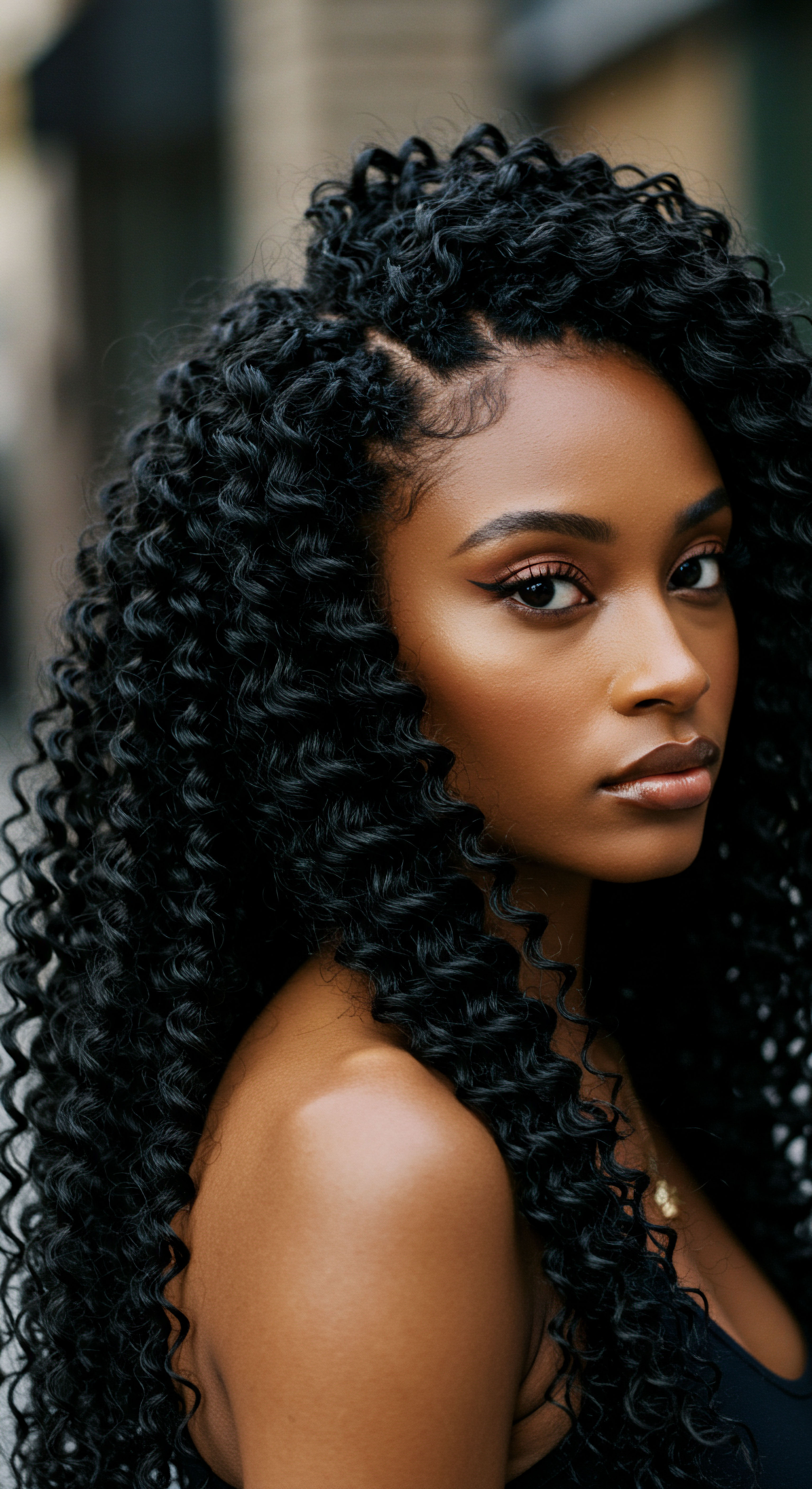
References
- Griebel, Helen Bradley. “The African American Woman’s Headwrap ❉ Unwinding the Symbols.” Art, Design, and Visual Thinking, 1999.
- Khoval, Christy Zhou, and Ashleigh Shelby Rosette. “The Natural Hair Bias in Job Recruitment.” Social Psychological and Personality Science, 2020.
- Mbilishaka, Afiya. “The Psychology of Black Hair.” Journal of Black Psychology, 2017.
- Synnott, Anthony. “Shame and Glory ❉ A Sociology of Hair.” British Journal of Sociology, 1987.
- Tharps, Lori L. and Ayana Byrd. Hair Story ❉ Untangling the Roots of Black Hair in America. St. Martin’s Press, 2001.
- Okoro, Nkiru. African Hair ❉ A Cultural History. Duke University Press, 2016.
- Delaney, Carol. “Untangling the Meanings of Hair in Turkish Society.” Anthropological Quarterly, 1994.
- Goodman, Robin. The Black Hair Handbook ❉ A Guide to Styling, Maintaining, and Understanding Black Hair. Crown, 2021.
- Caldwell, Kia Lilly. “Look at Her Hair ❉ The Body Politics of Black Womanhood in Brazil.” Transforming Anthropology, 2003.
- Daniels, Michelle, et al. “Mechanical and Structural Properties of African Hair.” Journal of Cosmetic Science, 2023.